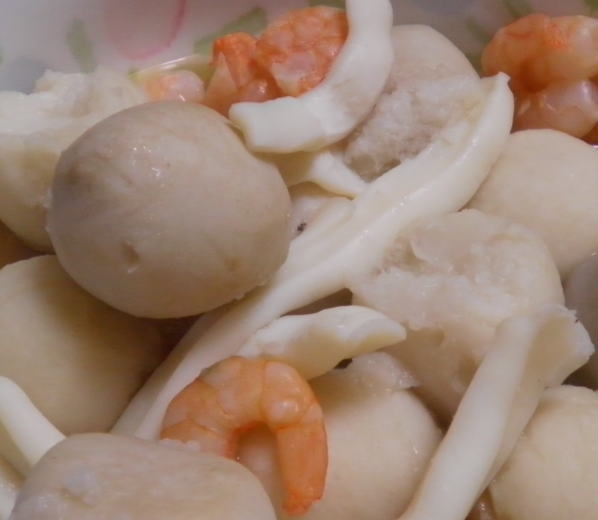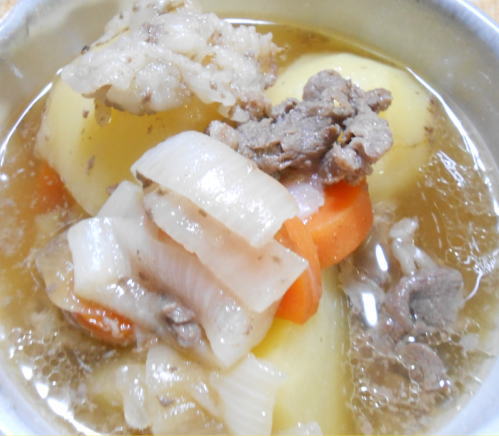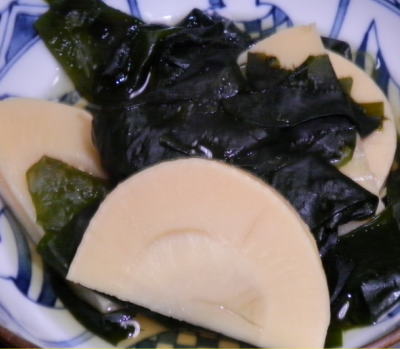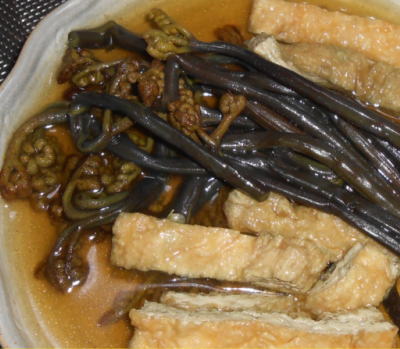Last update September 19, 2025
Japanese Food - Nimono -

Nimono
にもの, 煮物
Season-Boiled Food
Shortened from Niru (boil) and Mono (thing), Nimono is a generic term for boiled and seasoned cuisines. What a nice way to enjoy season’s vegetables, seafood, meats, or other food products! For example, if it’s a cold winter day, Furofuki Daikon (soft-boiled radish) seasoned with Miso would be a cool item. Or at an early spring, newly-harvested potatoes will make delicious Niku Jaga (potatoes and meat). Just put materials, boil with broth and finish by seasoning. Seasoning ingredients for Nimono are Sake (or Mirin), sugar, salt, vinegar, Shōyu, and Miso. Quite easy, isn’t it? But wait, there’s this absolute sequence to add the condiments: follow the order of “Sa-Shi-Su-Se-So”. Sa for Satō (sugar) and Sake (or Mirin), Shi for Shio (salt), Su for Su (vinegar), Se for Seuyu (Shōyu), and So for Miso. Why? Well, cooking is one form of chemical reaction, so be warned, the wrong sequence may ruin the taste. Good luck!

Nimono of Japanese taro and seafood.
|

Radish cooked and seasoned with Shōyu.
|

Niku Jaga or Nimono of meat and potatoes.
|

Waka Take Ni or Nimono of Wakame (a marine algae) and Takenoko (bamboo sprouts).
|

Nimono of Warabi and Aburage.
|

Gyū Suji Nikomi (Beef tendon deep-Nimono) with Konnyaku.
|

Nimono of Japanese taro and seafood.

Radish cooked and seasoned with Shōyu.

Niku Jaga or Nimono of meat and potatoes.

Waka Take Ni or Nimono of Wakame (a marine algae) and Takenoko (bamboo sprouts).

Nimono of Warabi and Aburage.

Gyū Suji Nikomi (Beef tendon deep-Nimono) with Konnyaku.
|
|


